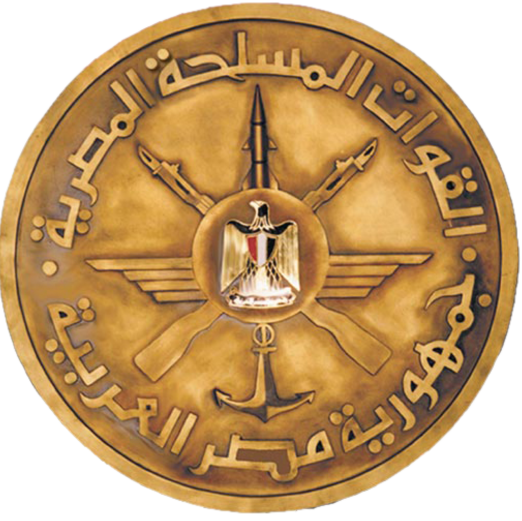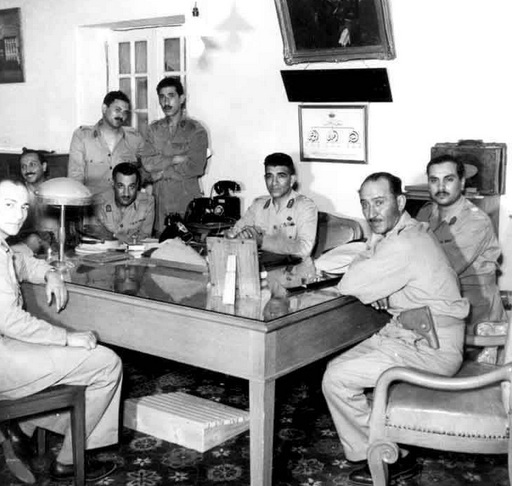|
Nile Corniche
The Nile Corniche () is a road that extends along the length of the Nile River in almost all of Egypt's governorates and is one of the busiest streets in Cairo. It was established in 1955. Historical At the beginning of the twenties of the last century, foreigners dominated the large hotels along the Corniche walkway for tourist resorts for foreigners, and Egyptians were not allowed to enjoy the Nile River and the views overlooking it, and the enjoyment was only for the foreign and wealthy class, which was Their palaces and hotels overlooked The Nile River, including foreign embassies and consulates and English military barracks, which extended from Qasr al-Nil Bridge to Hilton Ramses Hotel near The Egyptian Museum. After the July Revolution After 1952 Egyptian Revolution The Free Officers Movement and Gamal Abdel Nasser were especially keen to eliminate foreign manifestations in Downtown Cairo, and to gain their control and influence. The organization developed plans to ... [...More Info...] [...Related Items...] OR: [Wikipedia] [Google] [Baidu] |
Cairo
Cairo ( ; ar, القاهرة, al-Qāhirah, ) is the capital of Egypt and its largest city, home to 10 million people. It is also part of the largest urban agglomeration in Africa, the Arab world and the Middle East: The Greater Cairo metropolitan area, with a population of 21.9 million, is the 12th-largest in the world by population. Cairo is associated with ancient Egypt, as the Giza pyramid complex and the ancient cities of Memphis and Heliopolis are located in its geographical area. Located near the Nile Delta, the city first developed as Fustat, a settlement founded after the Muslim conquest of Egypt in 640 next to an existing ancient Roman fortress, Babylon. Under the Fatimid dynasty a new city, ''al-Qāhirah'', was founded nearby in 969. It later superseded Fustat as the main urban centre during the Ayyubid and Mamluk periods (12th–16th centuries). Cairo has long been a centre of the region's political and cultural life, and is titled "the city of a thousand m ... [...More Info...] [...Related Items...] OR: [Wikipedia] [Google] [Baidu] |
The Egyptian Museum
The Museum of Egyptian Antiquities, known commonly as the Egyptian Museum or the Cairo Museum, in Cairo, Egypt, is home to an extensive collection of ancient Egyptian antiquities. It has 120,000 items, with a representative amount on display and the remainder in storerooms. Built in 1901 by the Italian construction company, Garozzo-Zaffarani, to a design by the French architect Marcel Dourgnon, the edifice is one of the largest museums in the region. As of March 2019, the museum was open to the public. In 2022, the museum is due to be superseded by the newer and larger Grand Egyptian Museum at Giza. History The Egyptian Museum of Antiquities contains many important pieces of ancient Egyptian history. It houses the world's largest collection of Pharaonic antiquities. The Egyptian government established the museum built in 1835 near the Ezbekieh Garden and later moved to the Cairo Citadel. In 1855, Archduke Maximilian of Austria was given all of the artifacts by the Egypti ... [...More Info...] [...Related Items...] OR: [Wikipedia] [Google] [Baidu] |
Nile River
The Nile, , Bohairic , lg, Kiira , Nobiin: Áman Dawū is a major north-flowing river in northeastern Africa. It flows into the Mediterranean Sea. The Nile is the longest river in Africa and has historically been considered the longest river in the world, though this has been contested by research suggesting that the Amazon River is slightly longer.Amazon Longer Than Nile River, Scientists Say Of the world's major rivers, the Nile is one of the smallest, as measured by annual flow in cubic metres of water. About long, its covers eleven countries: the |
2019
File:2019 collage v1.png, From top left, clockwise: Hong Kong protests turn to widespread riots and civil disobedience; House of Representatives votes to adopt articles of impeachment against Donald Trump; CRISPR gene editing first used to experimentally treat a patient with a genetic disorder; the 2019–2022 Chilean protests, Chilean protests; the Event Horizon Telescope captures the first image of a black hole; Protesters in Tahrir Square during the 2019–2021 Iraqi protests; 2019 fire at Notre-Dame de Paris , Fire destroys the spire and roof of Notre Dame de Paris; a protest march against Maduro in Caracas called by Juan Guaido, Interim President of Venezuela, 300x300px, thumb rect 0 0 400 200 2019–2020 Hong Kong protests rect 400 0 800 400 First impeachment of Donald Trump rect 800 0 1200 400 Cas9 rect 0 400 600 800 Venezuelan presidential crisis rect 600 400 1200 800 2019–2022 Chilean protests rect 0 800 400 1200 2019 fire at Notre-Dame de Paris rect 400 800 800 1200 201 ... [...More Info...] [...Related Items...] OR: [Wikipedia] [Google] [Baidu] |
Abdel Latif Boghdadi (politician)
Abdel Latif Boghdadi or Abd el-Latif el-Baghdadi (20 September 1917 – 9 September 1999) ( ar, عبد اللطيف البغدادي) was an Egyptian politician, senior air force officer, and judge. An original member of the Free Officers Movement which overthrew the monarchy in Egypt in the 1952 Revolution, Boghdadi later served as Gamal Abdel Nasser's vice president. The French author Jean Lacouture called Boghdadi "a robust manager" who only lacked "stature comparable to Nasser's." The two leaders had a falling out over Nasser's increasingly socialist and pro-USSR policies and Boghdadi subsequently withdrew from political life in 1964, although he mended ties with Nasser before the latter's death in 1970. Early life Boghdadi was born in El Mansoura on 20 September 1917. He excelled at Egypt's military academy in 1938 and, later on, its air force academy. He rose to the rank of wing commander in the Egyptian Air Force and was sent by the Egyptian government under Prime Mini ... [...More Info...] [...Related Items...] OR: [Wikipedia] [Google] [Baidu] |
Shubra
Shoubra ( ar, شبرا, ; Coptic language, Coptic: '; also written Shubra or Shobra) is one of the largest districts of Cairo, Egypt and it is administratively divided into three areas: Shubra (administrative region), Shubra, Road El Farag, and Elsahel. Etymology Although Shoubra has been immensely large for the last few decades, the name originally derives from the Coptic language, Coptic word ', which means a small village or field, as the area is well known for its rich fields that neighbour the Nile River. In Egypt, there are many neighborhoods, towns and villages that bear the name of Shubra, for example, the Shubra (administrative region), administrative region of Shoubra that is within the large district of Shubra, both of which are not to be confused with one of Qalyubia's industrial suburbs, Shubra El-Kheima. Of the less well-known areas — villages specifically — there are also several places that bear the name of Shoubra, such as the Shoubra Bekhoum village that is ... [...More Info...] [...Related Items...] OR: [Wikipedia] [Google] [Baidu] |
Downtown Cairo
Downtown Cairo ( arz, وسط البلد '' "middle of town")'', has been the urban center of Cairo, Egypt, since the late 19th century, when the district was designed and built. History Downtown Cairo was designed by prestigious French architects who were commissioned by Khedive Ismail during his visit to Paris, and since then he wanted to make the Egyptian Kingdom capital better than Paris and to be the jewel of the orient. It was he who stressed the importance of European style urban planning in Cairo, to include broad, linear gridded streets, geometric harmony and modern European architectural style. It was once home to the prosperous elite of late 19th and early 20th century Cairo. It is a relic of a bygone era — Egypt's ''belle epoque'' — and demonstrates the vision for developing Egypt. Yet decades of neglect by the neighbourhood's landlords and tenants following the burning of most of Cairo's buildings during the popular Cairo fire incident prior the 1952 Revoluti ... [...More Info...] [...Related Items...] OR: [Wikipedia] [Google] [Baidu] |
Gamal Abdel Nasser
Gamal Abdel Nasser Hussein, . (15 January 1918 – 28 September 1970) was an Egyptian politician who served as the second president of Egypt from 1954 until his death in 1970. Nasser led the Egyptian revolution of 1952 and introduced far-reaching land reforms the following year. Following a 1954 attempt on his life by a Muslim Brotherhood member, he cracked down on the organization, put President Mohamed Naguib under house arrest and assumed executive office. He was formally elected president in June 1956. Nasser's popularity in Egypt and the Arab world skyrocketed after his nationalization of the Suez Canal Company and his political victory in the subsequent Suez Crisis, known in Egypt as the ''Tripartite Aggression''. Calls for pan-Arab unity under his leadership increased, culminating with the formation of the United Arab Republic with Syria from 1958 to 1961. In 1962, Nasser began a series of major socialist measures and modernization reforms in Egypt. Despite setba ... [...More Info...] [...Related Items...] OR: [Wikipedia] [Google] [Baidu] |
Free Officers Movement (Egypt)
The Free Officers ( ar, حركة الضباط الأحرار, Ḥarakat a-dubbāṭ al-ʾaḥrār) were a group of revolutionary Egyptian nationalism, Egyptian nationalist officers in the Egyptian Armed Forces and Sudanese Armed Forces that instigated the Egyptian Revolution of 1952. Initially started as a small Egyptian military, rebellion military cell under Abdel Moneim Abdel Raouf, which included Gamal Abdel Nasser, Hussein Hamouda, Khaled Mohieddin, Kamal el-Din Hussein, Salah Nasr, Abdel Hakim Amer, and Saad Tawfik, it operated as a clandestine movement of junior officers during the 1948 Arab–Israeli War, Palestine War of 1948-1949. The nationally respected war hero Mohamed Naguib joined the Free Officers in 1949. Naguib's hero status, and influence within the army, granted the movement credibility, both within the military and the public at large. He became the official leader of the Free Officers during the turmoil leading up the Egyptian revolution of 1952, revolution that ... [...More Info...] [...Related Items...] OR: [Wikipedia] [Google] [Baidu] |
Qasr Al-Nil Bridge
The Qasr El Nil Bridge (originally named ''Khedive Ismail Bridge''), also commonly spelled Kasr El Nil Bridge, is a historic structure dating from 1931 which replaced the first bridge to span the Nile River in central Cairo, Egypt. It connects Tahrir Square in downtown Cairo to the modern Cairo Opera complex toward the southern end of Gezira Island. At the bridge's east and west approaches are four large bronze lion statues; they are late 19th-century works by Henri Alfred Jacquemart, French sculptor and animalier. The newer and wider 6th October Bridge parallels its route just to the north. Route Qasr El Nil Street crosses over the Nile on the bridge, from the east bank area Tahrir Square—Liberation Square in downtown Cairo, past the huge Mogamma government building and the headquarters of the Arab League, then onto the Qasr El Nil Bridge over the river to Gezira Island. There it meets Opera Square and the Cairo Opera House, with connections north to the Cairo Tower and th ... [...More Info...] [...Related Items...] OR: [Wikipedia] [Google] [Baidu] |
Helwan
Helwan ( ar, حلوان ', , cop, ϩⲁⲗⲟⲩⲁⲛ, Halouan) is a city in Egypt and part of Greater Cairo, on the bank of the Nile, opposite the ruins of Memphis. Originally a southern suburb of Cairo, it served as the capital of the now defunct Helwan Governorate from April 2008 to April 2011, after which it was re-incorporated into the Cairo Governorate. The ''kism'' of Helwan had a population of 643,327 in the 2006 census.Central Agency for Public Mobilisation and Statistics, Population and Housing Census 2006, Population distribution by sex, gov: Cairo Retrieved on 2008-04-01. History The Helwan and Isnian cultures of the late |






